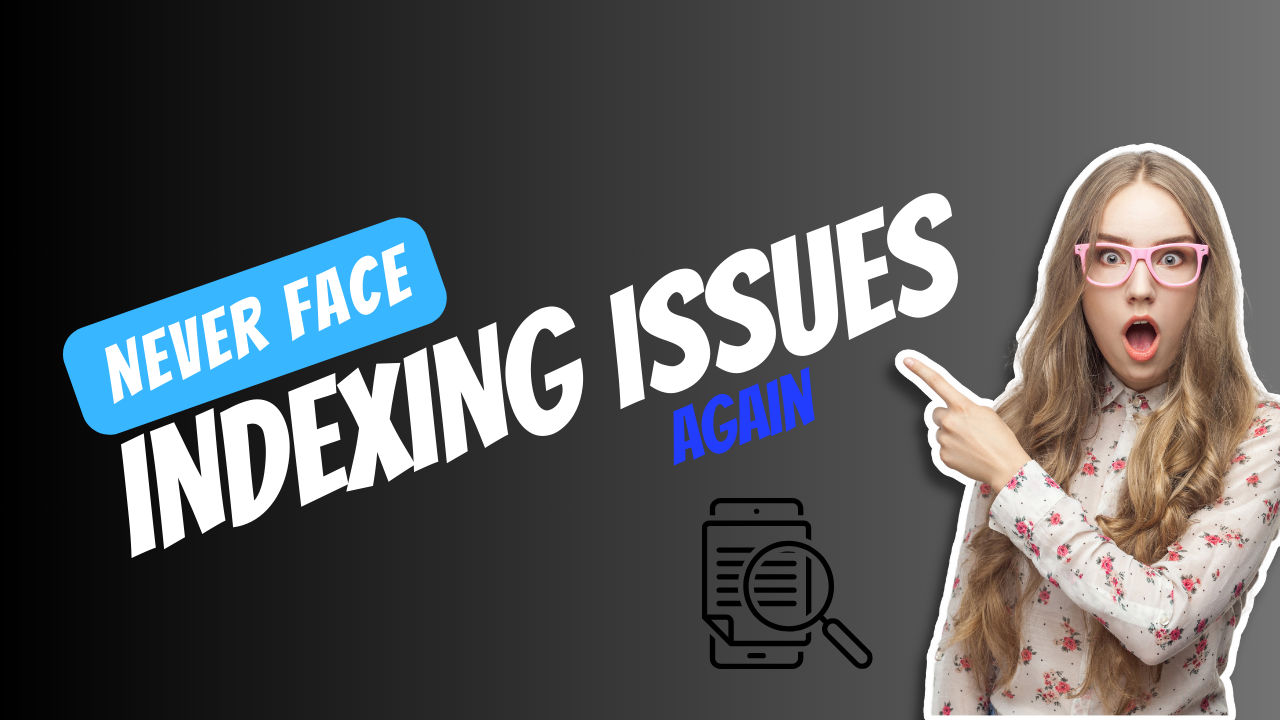Are you tangled up in the web of indexing issues?
I totally get it. It feels like you’re shouting into the void, right? Your posts are ready to dazzle the world, but somehow, they’re stuck in the backstage of Google’s search results.
Frustrating, isn’t it? You’ve started your blog but getting no readers?
But don’t worry, we’ve all been there.
The good news is, that understanding how to solve indexing issues isn’t as tricky as it seems. Think of it like a game where the prize is that top spot in search results.
A few tweaks here, a bit of SEO magic there, and voilà! Your blog starts getting the spotlight it deserves. So, let’s roll up our sleeves and turn those indexing woes into wins!
In the world of blogging, visibility on search engines is a key measure of success. This visibility largely depends on indexing, a process where search engines store and organize content from websites.
However, bloggers often face indexing problems that prevent their content from appearing in search results. Let’s explore these issues and how to solve them.
Understanding Indexing
Indexing is the backbone of how search engines like Google make your blog content searchable. When your blog is properly indexed, it becomes visible and can attract organic traffic.
Common Indexing issues and Solutions
1. Crawl Errors
Cause: Crawl errors occur when search engine bots cannot access your site. This might be due to server downtime, incorrect settings in your robots.txt file, or broken links within your site.
Solution: Use Google Search Console to monitor crawl errors. Make sure your robots.txt file is correctly configured to allow search engine bots to crawl your site effectively. Regularly check for and fix broken links, and ensure your hosting server is reliable.
2. Noindex Tags
Cause: Noindex tags are HTML tags that instruct search engines not to index certain pages. They might be placed in a blog’s code accidentally, leading to important content being left out of search results.
Solution: Review your blog’s HTML code to find and remove any unintended noindex tags. Plugins like Yoast SEO for WordPress can help you manage these settings without having to dive into code.
3. Low-Quality Content
Cause: Search engines aim to provide the best content to users. If your content is thin, duplicated, or offers little value, search engines might choose not to index it.
Solution: Focus on creating original, valuable, and engaging content. Update or remove thin content, and ensure you are not duplicating content across your blog.
4. Poor Site Structure causes indexing issues
Cause: A site that is difficult for search engines to navigate can lead to poor indexing. A confusing site structure, missing pages, or a lack of a clear content hierarchy can all contribute to this issue.
Solution: Design your site with a clear hierarchy and intuitive navigation. Regularly update your sitemap and submit it to search engines, ensuring all new content is included.
5. Mobile-Unfriendliness
Cause: With the increasing dominance of mobile browsing, search engines prefer sites that are mobile-friendly. If your blog isn’t optimized for mobile devices, it might not be indexed effectively.
Solution: Ensure your blog uses a responsive design. Test your site’s mobile usability with tools like Google’s Mobile-Friendly Test.
Advanced Tips for solving Indexing issues
Boost Loading Speed:
Optimize your site’s loading speed, as slow-loading sites can be penalized in indexing.
Implement Structured Data helps in indexing issues:
Use structured data to help search engines understand and index your content more accurately.
Use relevant keywords throughout your blog posts.
This includes your title, meta description, headers, and body text. Make sure your keywords are relevant to your topic and that you use them naturally.
Build high-quality backlinks to your blog posts.
Backlinks are links from other websites to your blog. The more high-quality backlinks you have, the higher your blog will rank in search results.
Submit your blog posts to search engines.
Once you have published a new blog post, submit it to search engines like Google and Bing. This will help them find and index your content faster.
Use social media to help with your indexing issues.
Social media is a great way to get people to read your blog posts and share them with others. This will help to improve your blog’s visibility and ranking.
Use internal linking to connect your blog posts.
Internal linking is the practice of linking to other blog posts on your website. This helps search engines understand the structure of your website and the relationships between your blog posts.
Here are some additional tips for reducing indexing issues for bloggers:
- Use a clear and concise title for each blog post.
- Write a meta description for each blog post that is 150-160 characters long.
- Use headers and subheaders to break up your content and make it easier to read.
- Use images and videos to break up your content and make it more visually appealing.
- Promote your blog posts on social media and other online platforms.
Resolving indexing issues is crucial for the visibility and success of your blog. By understanding and addressing these common problems, you can enhance your blog’s presence in search engine results. Stay informed about SEO best practices and continually optimize your site for the best results.


